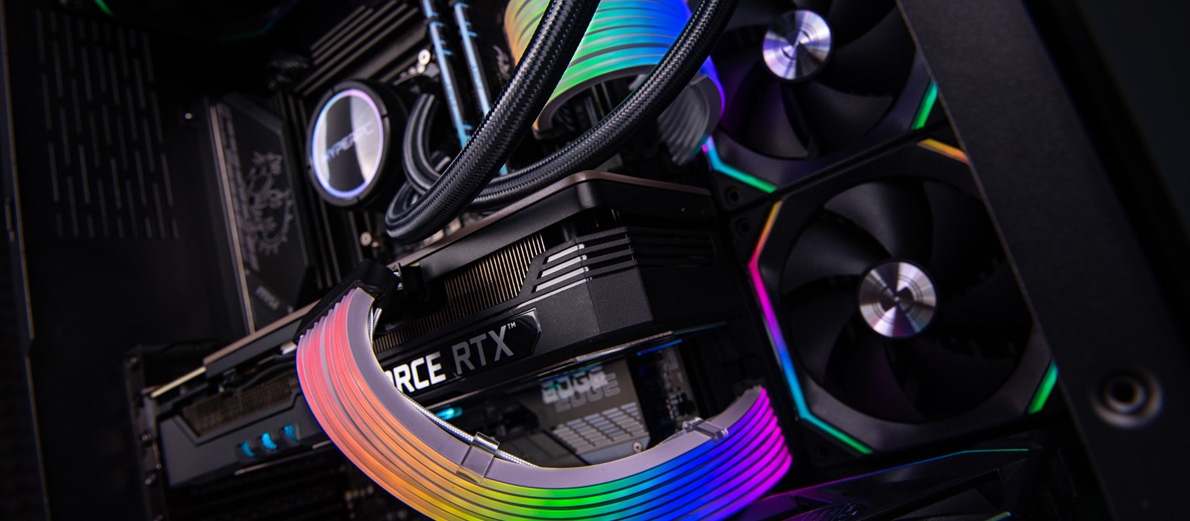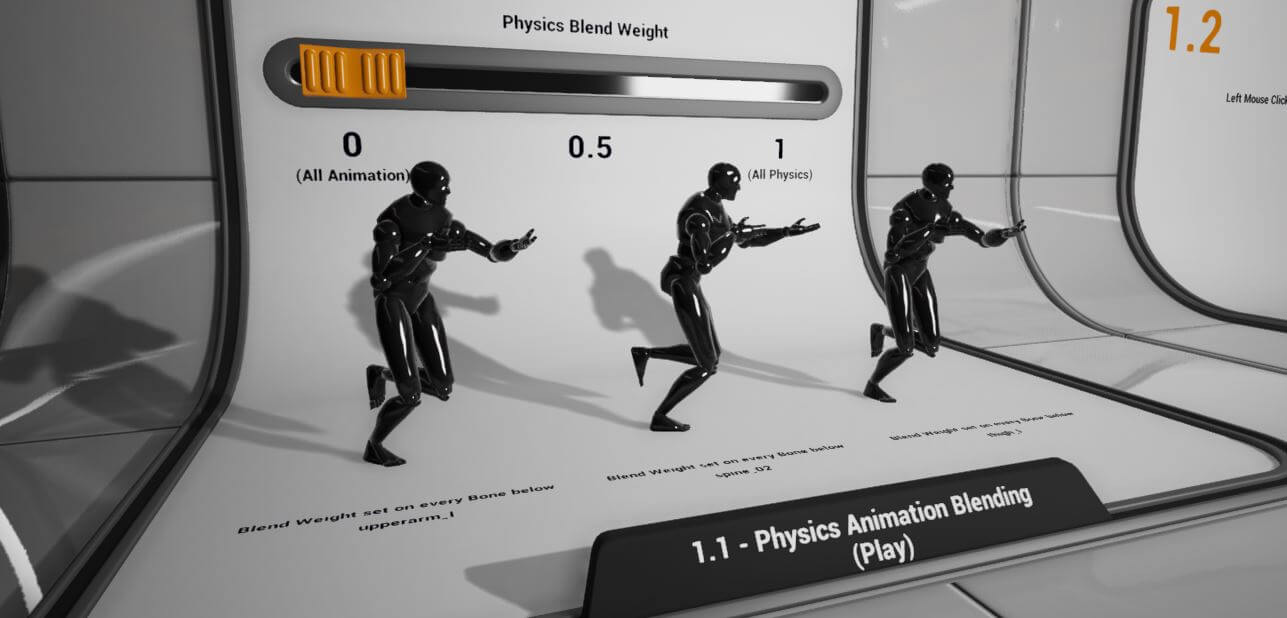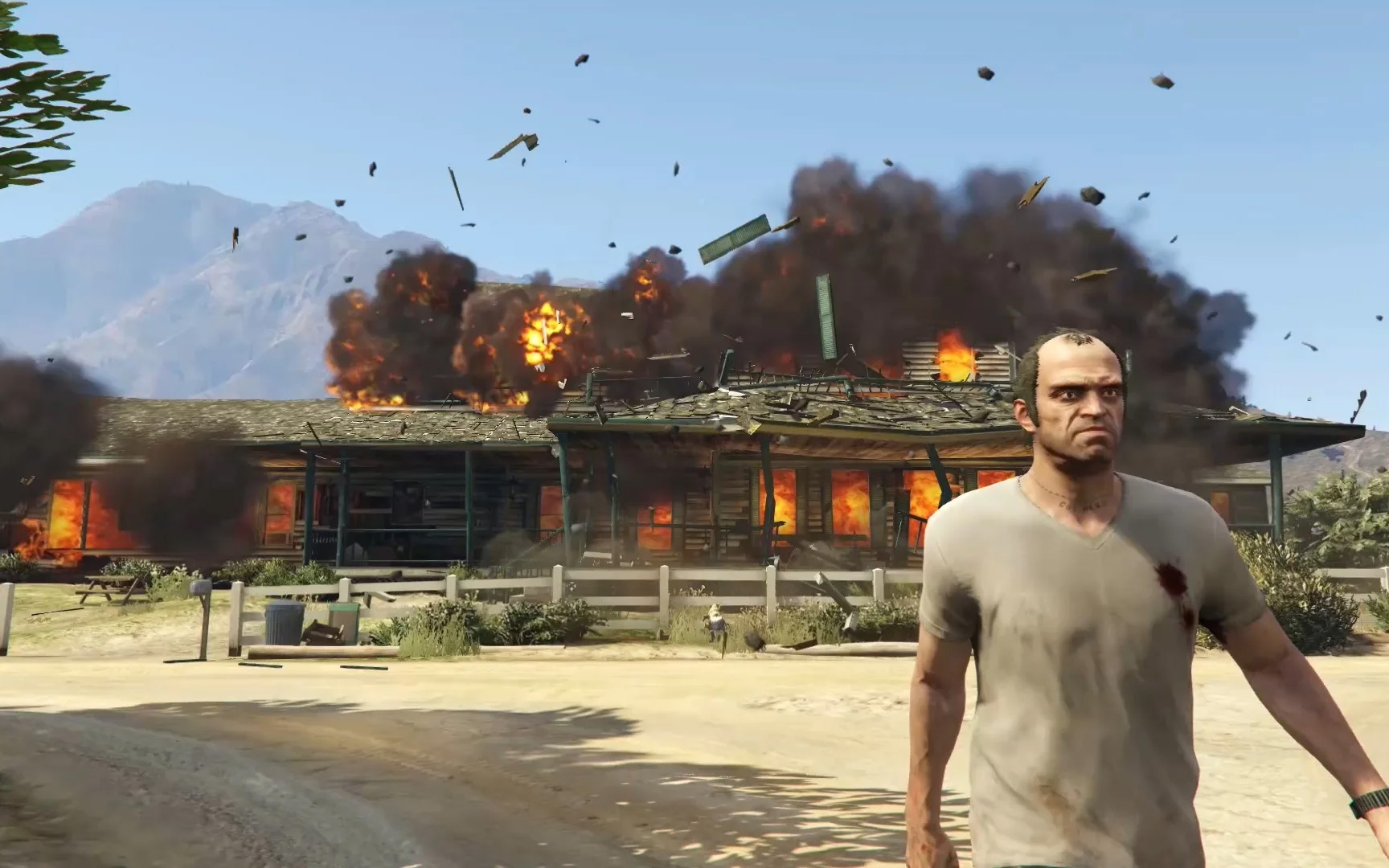-
Choose a computerStep 1 of 3. Goals and Wishes01. Goals and Wishes02. Deadlines and Budget03. ContactsMultiple options can be selectedUsage goalsWishesYour choice
-
Choose a computerStep 2 of 3. Deadlines and Budget01. Goals and Wishes02. Deadlines and Budget03. ContactsOnly one option can be selectedDeadlinesBudget
-
Choose a computerStep 3 of 3. Contacts01. Goals and Wishes02. Deadlines and Budget03. Contacts* — required field

You have probably heard phrases like "unlocking the potential of a graphics card" or "bottleneck". There are many prejudices, misconceptions and absurdities surrounding these concepts, all of which are part of a more complex topic about the balance between CPU and GPU. We decided to delve into this nuance in detail, as well as answer the eternal question: how to correctly choose a processor for a graphics card and vice versa.
What tasks does the processor solve, and which ones does the graphics card solve?
The first and most important thing to understand is that the CPU and GPU solve completely different tasks. The graphics card is responsible for one set of calculations, and the central processor is responsible for a completely different one. Let's briefly look at what they do in games.
What the processor is responsible for
For simplicity, we will omit complex technical details and focus on general concepts, as this will be enough to understand our topic. So, the processor is responsible for calculations:
- geometry;
- physics of objects;
- particle behavior;
- numerical characteristics;
- artificial intelligence.
Geometry calculation refers to vertex rendering. The more 3D models it has, the better it looks. If we approach a vertical pole in old games (for example, a stake), we will see not a round model, but some hexagonal or octagonal shape. Processors of the past did not have enough performance to calculate a large number of vertices. In modern games, the situation is much better. For example, one of the main reasons why Cyberpunk 2077 heavily loads the CPU is precisely the high quality of the geometry. Walking down any alley, you can see how many vertices even such inconspicuous objects as cables and water pipes have. They all look not like polygons, but like real circular objects. Although in reality they are also made up of vertices, their number is very large.
In video games, physics refers to the behavior of objects upon contact. For example, when a character enters the water, his legs come into contact with the liquid and create small waves. Or, when Arthur Morgan in Red Dead Redemption 2 rolls down a cliff, he hits his body against rocks. They also start rolling down the slope, while they can touch other boulders, which will cause a local rockfall. Another example of physics is the behavior of a car when hit. The force and speed with which the car will fly off to the side is calculated by the central processor.
Particles in video games are also called "particles" from the English word "particles". They are small objects in the form of falling snow, splashes of water, dust, sparks, etc. The behavior of all these particles is not random. Their trajectory, as well as interaction with other objects, are carefully calculated by the processor. Moreover, in some games they can significantly load the CPU. For example, in Battlefield 5, the most successful player gets the opportunity to strike the point with the V-1 rocket. Its explosion covers a huge area, making this device the most powerful weapon in the game. The strike is accompanied by beautiful special effects, based on a multitude of particles. They largely reduce FPS at the moment of the explosion by 2-3 times.
Numerical characteristics are calculated through basic arithmetic operations. Division, multiplication, subtraction, addition - all of these are continuously processed by the central processor. When we shoot a rifle in a game, the CPU calculates the bullet's speed, its trajectory, and the damage that changes depending on the distance. Moreover, in some shooters, projectiles can pass through thin covers. Then the processor adds another parameter to the formula for calculating damage. Even when we press the "forward" button, the CPU calculates how far and how the character will move. For example, if we move while sitting, the necessary coefficient is substituted into the formula, and the character's speed decreases.
Artificial intelligence in games refers to the illusion of intelligence in NPCs. It is based on the calculation of numerical characteristics, but they work with many other technologies. For example, ray tracing is used not only for creating realistic lighting. In many games, it serves as NPCs' vision. It is most often used in projects with stealth elements. A multitude of rays are emitted from NPCs' eyes, scanning the area for the main character. If these rays intersect the game character, the NPC will attack them. And if the hero is not found, the search for the target continues.
In addition to all the mentioned calculations, the central processor also takes on background loads. During the game, the Windows operating system continues to work. It is enough to go to the "Task Manager" and click on "Processes". A giant list of various services and operations that are processed in real-time will open before you. Yes, many of them are so elementary that they almost do not load the central processor. But considering their number, they simply cannot but affect the system's performance.
What the graphics card is responsible for
Unlike central processors, graphics cards are narrowly specialized devices. They cannot perform such a wide range of tasks. Simultaneously computing object geometry, processing background operations, and guiding artificial intelligence are impossible for them. Cards deal only with graphic calculations. Their main tasks in video games are as follows:
- lighting calculation;
- texture mapping;
- tessellation processing;
- shadow and shading calculation;
- post-processing effect imposition;
- elimination of "jaggies" (smoothing).

Lighting in games refers to algorithms used to simulate light. Conditionally, they are divided into global and local. If we omit the complex technical details, global lighting is light from the sun or moon. And local is from artificial sources, for example, from lamps and torches. In old video games, lighting was static, and it was "baked" directly into textures. But modern algorithms have gone much further. Now lighting is dynamic and reacts to all objects in the scene. And the crown of modern graphics is real-time ray tracing technology. This algorithm does not simulate lighting, as it used to be, but builds it according to the laws of physics.
When we talked about central processors, we mentioned that the CPU builds 3D models by drawing their vertices. So, the graphics card overlays textures on all these 3D models. They are images that wrap around objects. Their quality depends largely not on the power of the graphics processor but on the amount of available video memory. It is an analog of RAM but only for graphics cards. The more video memory, the higher the resolution textures can be used. You must have noticed that the weight of games from a few megabytes has increased to several hundred gigabytes. The main reason is the quality of textures. Modern consoles and graphics cards have a lot of available memory, so developers can use high-resolution textures. And the higher their resolution, the more they weigh.
All 3D objects in computer graphics are made up of polygons. These polygons are specifically referred to as "polygons". Tessellation is an algorithm that breaks down polygons into smaller primitives. Remember how realistic the snow was in Red Dead Redemption 2? When characters walked through it, a clear trail was left behind them. This is the work of tessellation. Snow polygons are broken down into smaller parts that interact with each other and are destroyed. The result is a clear and realistic trail.
There is no need to explain what shadows are in video games, as it is obvious. However, global shading is a less well-known algorithm among regular gamers. Surely you have seen abbreviations such as SSAO, HBAO, VXAO, etc. in the graphics settings. All of this is called "Ambient Occlusion". It occurs in areas not directly illuminated. For example, in corners of rooms or where walls meet ceilings. "AO" algorithms, along with shadows, have a huge impact on the perception of graphics in games. In terms of importance, they can be compared to textures or global lighting.
Post-processing refers to graphic effects that are applied on top of the finished image. Reflections in the screen space (SSR), blurring during movement, contact shadows, chromatic aberration, sharpness, graininess, vignette - all of these are post-processing. And only the GPU is responsible for their implementation. Some effects, such as graininess or vignetting, do not affect performance. However, contact shadows or reflections in screen space can significantly reduce frame rates.
Because images on modern displays are built with small square pixels, it is impossible to avoid "stair-stepping" on diagonal lines. A special technology - smoothing - is responsible for eliminating this. There are many algorithms for it, but only MLAA worked on the central processor. All other types of smoothing are calculated exclusively by the video adapter.
How to choose the right graphics card for your processor
So, we have found out which operations are handled by the GPU and which by the CPU. Now our task is to learn how to avoid a "bottleneck" and understand how to choose the right graphics card for the processor. For example, if you have an Intel Core i3-9100 CPU and you purchase an NVIDIA GeForce RTX 3070 for it. When running Cyberpunk 2077, you expect to see 100-120 FPS at high graphics settings in Full HD resolution. After all, according to tests, the GeForce RTX 3070 really delivers such performance. But your frame rate is only 30-40 FPS. You change the graphics settings, but to no avail. So where was the mistake made?
To answer this question, you need to use a monitoring program. It will show how the components of our PC work in the game. The most popular of these utilities is MSI Afterburner. It has a "load percentage" indicator. It shows how much the graphics or central processors are loaded.
Returning to our example, if we run MSI Afterburner with Cyberpunk 2077, we will see the CPU load percentage at 100% and the GPU at about 50%. What does this mean? This means that the FPS is limited by the processor. The CPU cannot prepare enough frames for the video card, and it is idle. The bottleneck in this case will be the central processor. The only way to solve this problem is to replace the Intel Core i3-9100 with a more powerful processor.
Thus, there is no point in purchasing a powerful graphics card for a weak processor. And to maintain balance between them, it is necessary to carefully study the performance of both components. First, look at the CPU tests, then the graphics card, and then their performance in combination. Just enter the names of the components you need in the search bar on YouTube, and you will find many videos with tests from regular users. We have also prepared a special compatibility table that already includes the most suitable CPU-GPU combinations.
Table of correspondence between video cards and processors
| CPU | GPU |
|---|---|
| Intel Core: i3-12100 | NVIDIA Geforce RTX 3050 AMD Radeon RX 6500XT |
| Intel Core: i5-12400, i5-13400 AMD Ryzen: 5600 |
NVIDIA GeForce: RTX 3060, RTX 3060 Ti AMD Radeon: RX 6600, 6600XT |
| Intel Core: i5-13500 AMD Ryzen: 7600X |
NVIDIA GeForce: RTX 4060 Ti, RTX 4070 AMD Radeon: RX 6700, RX 6700 XT |
| Intel Core: i5-13600K, i7-13700 AMD Ryzen: 5800X |
NVIDIA GeForce: RTX 4070 Ti, 4080 AMD: Radeon RX 6800, RX 6800XT |
| Intel Core: i7-13700K AMD Ryzen: 5800X3D, 5900X, 7700X |
NVIDIA GeForce: RTX 4080 AMD Radeon: RX 6900XT, RX 6950XT |
| Intel Core: i9-13900K AMD Ryzen: 5950X, 7900X,7950X |
NVIDIA GeForce RTX 4090 |
Choosing optimal combinations of processors and video cards
For ease of perception, we will divide the bundles by price category:
- budget;
- mid-budget;
- premium;
- maximum.
In the budget segment, the combination of Intel Core i3-12100(F) and NVIDIA GeForce RTX 3050 takes the lead. Considering the support for DLSS smoothing, this is an excellent combination for Full HD gaming at a relatively low cost.
The ideal combination in the mid-budget category is Intel Core i5-12400(F) and NVIDIA GeForce RTX 3060 Ti. Such a system will provide high FPS both in Full HD and in 2K resolution. Moreover, on this configuration, you can confidently enable ray tracing and not be afraid of frame rate drops.
The best combination in the premium segment is the combination of Intel Core i7-12700K and NVIDIA GeForce RTX 3080. The powerful 12-core processor will not be a bottleneck for gaming in 2K resolution on high refresh rate monitors. And thanks to the powerful video card, you can count on a comfortable FPS even in 4K.
The maximum price category is distinguished not only by the cost of components, but also by the most powerful graphics card in the history of mankind - NVIDIA GeForce RTX 4090. Only the Intel Core i9-13900(K) processor is capable of rendering enough frames for it. And this is in 4K resolution with ray tracing, which has huge requirements for graphics accelerators.
Correspondence of processors and video cards in HYPERPC computers
Balance is the first thing that HYPERPC engineers consider when creating personal computers. We carefully analyze the performance of components not only in games but also in benchmarks. A detailed analysis allows engineers to choose the perfect combination of processors and video cards. You can see this for yourself by looking at the average FPS that we indicate in the card of each HYPERPC computer. With our systems, you no longer have to worry about the balance between computer components.



